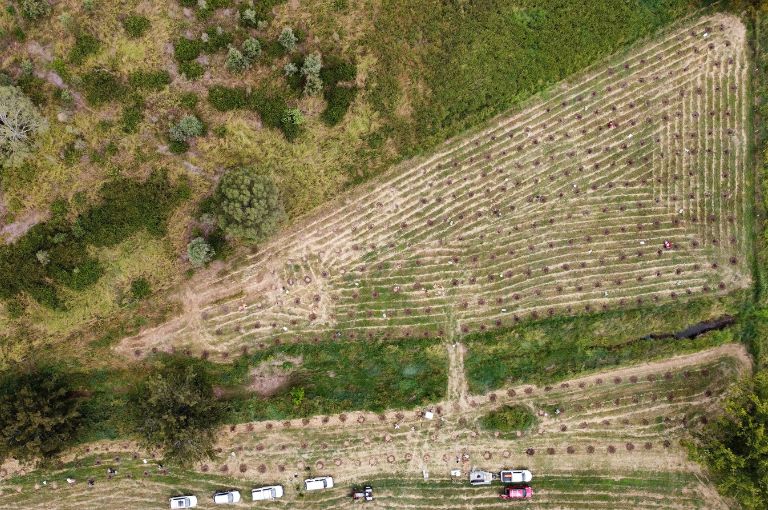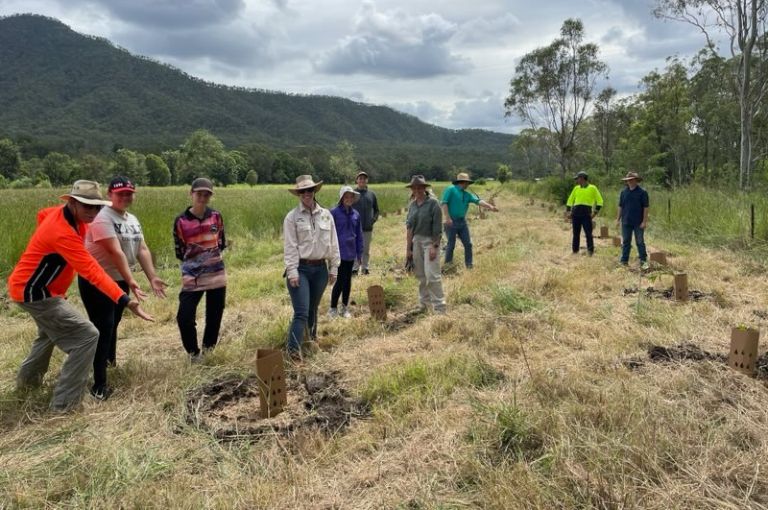
A new climate corridor for koalas, greater gliders and other wildlife is springing to life along the western ‘horn’ of the Greater Border Ranges.
Over the last twelve months, local landholders have helped plant over 3,500 trees, and installed dozens of nest boxes and wildlife water drinkers across 53 properties to establish the Bunyas to Border (B2B) climate corridor.
The corridor is the first in a series that the Great Eastern Ranges and the International Fund for Animal Welfare (IFAW) hope to support as part of Koala Climate Corridors to help wildlife adapt and communities build resilience to the impacts of climate change.
Regional project partner, Lockyer Uplands Catchments Inc. has been engaging local landholders and communities in B2B to regenerate and reconnect habitats to provide wildlife with safe spaces to move as conditions and food sources shift.
Community workshops focused around some of the project’s eight target animal species, which include koalas, greater gliders, brush-tailed rock wallabies and rainbow bee-eaters.
President of LUCI, Diane Guthrie, says that the response to Bunyas to Border has been heartening with over 350 landholders, community members and groups actively engaging in the project.
“There are a lot of local groups supporting the project and several others have approached LUCI wanting to align their efforts with Bunyas to Border so that we can achieve broader conservation goals together. We’ve also had many more landholders and members of the community wanting to get involved than we can currently support.”
“B2B is very much a collaborative, community-led effort which was the intention from the start.”

Regional Director of IFAW Oceania, Rebecca Keeble, said the B2B project is an important component of IFAW’s global goal to create pathways for wildlife that not only help maintain healthy wildlife populations, but also help communities become more resilient. That’s why the organisation is pleased to continue its support of the on-ground efforts into a second year.
“Protecting wildlife and healthy ecosystems is critical for the planet’s health. When wildlife can move safely in response to ever-changing conditions, we are providing a buffer against extinction, while also helping to protect human wellbeing by preventing collisions and creating robust and resilient biodiversity,” she said.
“The second phase of Bunyas to Border will involve building on the progress that has already been made and expanding the project to include new landholders and sites,” says Liz Gould, Acting Executive Director of Great Eastern Ranges.
Liz says that the long-term aim of Koala Climate Corridors is to extend the B2B corridor across the Queensland-NSW border to connect with related efforts in the southwest Border Ranges.
“This is the scale of effort needed to make a meaningful impact for our wildlife, communities and land in the face of climate change.”



 Media release
Media release